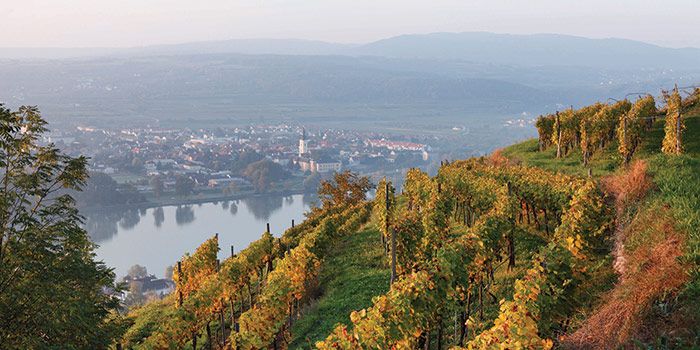Blaufränkisch is a variety that is excitingly in transition, its style evolving as producers put their different specific take on it, depending on soil type, clone and frankly, inclination, writes Keay.
One of my most enduring memories of my LSE postgraduate course was my tutor – now a Hungarian MEP for Fidesz, no less – suggesting there was only one thing that the diverse countries of the former Hapsburg Empire then had in common.
“Cabbage – it’s a staple across the region, from Budapest to Bratislava to Prague to Zagreb, and is pretty much impossible to avoid,” he said.
But actually there’s something else. The Blue grape. Known as Blaufränkisch in Austria, Kekfrankos in Hungary, Frankovka in the Czech Republic and Slovakia, Borgonja in Croatia and Modra Frankinja in Slovenia, the variety is known to Germans as Lemberger. Unsurprisingly, for a grape with so many names, it can also show very different characteristics with typically red cherry fruit flavours coming through in Austrian clones and more nuanced, mineral darker fruit flavours when made over the border with Hungarian clones. And when it’s made in other places… well, take your pick, although the best examples should have fine rather than aggressive tannins, and ideally be un-oaked, and unshowy.
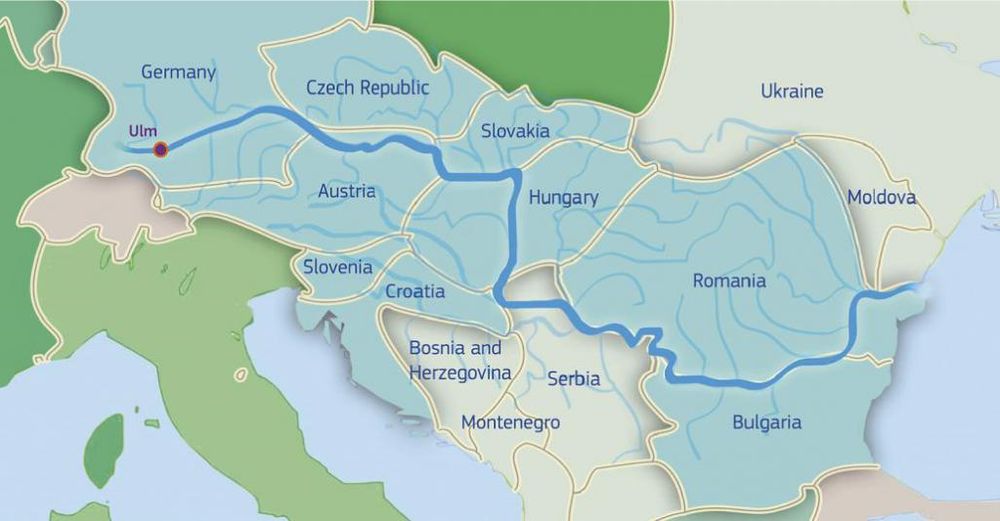
The path of the Danube through Central and Eastern Europe
Wines of Hungary’s ‘Blue of the Danube’ tasting claimed to be the first ever trade tasting in the UK devoted solely to a variety that, until recently, wasn’t taken very seriously at all. In the communist era, yields were high; quality was sacrificed to such an extent that even cheap and cheerful Egri Bikaver fell into disrepute; also known as Bulls Blood, Egri Bikaver, was an important hard-currency earner for Hungary until the mid 1980s and in which Kekfrankos was a key part of the blend.
“Made from degraded vine stock,” sniffed my LSE tutor at the Bull’s Blood I bought to one of his soirees, unimpressed by the red bull glaring out from the black label.
But things have moved on. Internationally the Blue grape still has a low profile, and some feel it generally works better as part of a blend.
“I’ve always felt Blaufränkisch needs a friend; Zweigelt (which is a crossing of Blaufränkisch with St Laurent) often delivers more, whilst within classic blends like Egri Bikaver it generally works very well too,” says wine-writer and historian Giles MacDonogh, who feels the variety can easily be overworked.
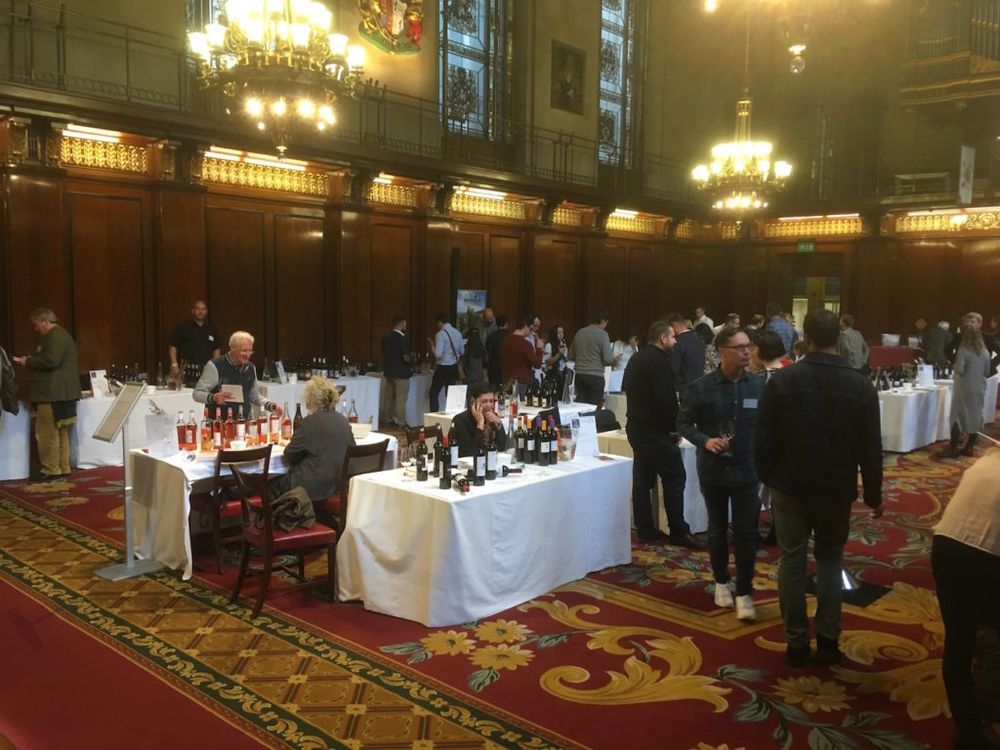
The Wines of Hungary tasting was the first tasting in the UK to focus entirely on Blaufränkisch
However, as this fascinating tasting showed, winemakers across central Europe are now recognising that the variety’s medium-weight, lowish-alcohol characteristics (most wines are 12.5-13.5%) are in vogue right now. This is a variety that is excitingly in transition, its style evolving as producers put their different specific take on it, depending on soil type, clone and frankly, inclination.
“The variety really has emerged as the region’s grape,” says Elizabeth Gabay MW, who led a masterclass looking at single varietal expressions from across the region, and indeed further beyond. Two of her ten wines were from Austria, one Slovenia, one Slovakia, two Hungary, one Croatia, one Romania…but there were also one each from Spain (Ronda in Andalucia, no less) and Australia’s Adelaide Hills.
How did they get there? Gabay suggested the Danube acted as a sort of motorway for the variety to travel, but it reached these more remote destinations through Teutonic determination: the Spanish incarnation, the Acinipio 2013 is made by the Germanic-sounding Bodegas Schatz and the Australian BlueBlood 2016 by Hahndorf Hill, which specialises in Austrian varieties.
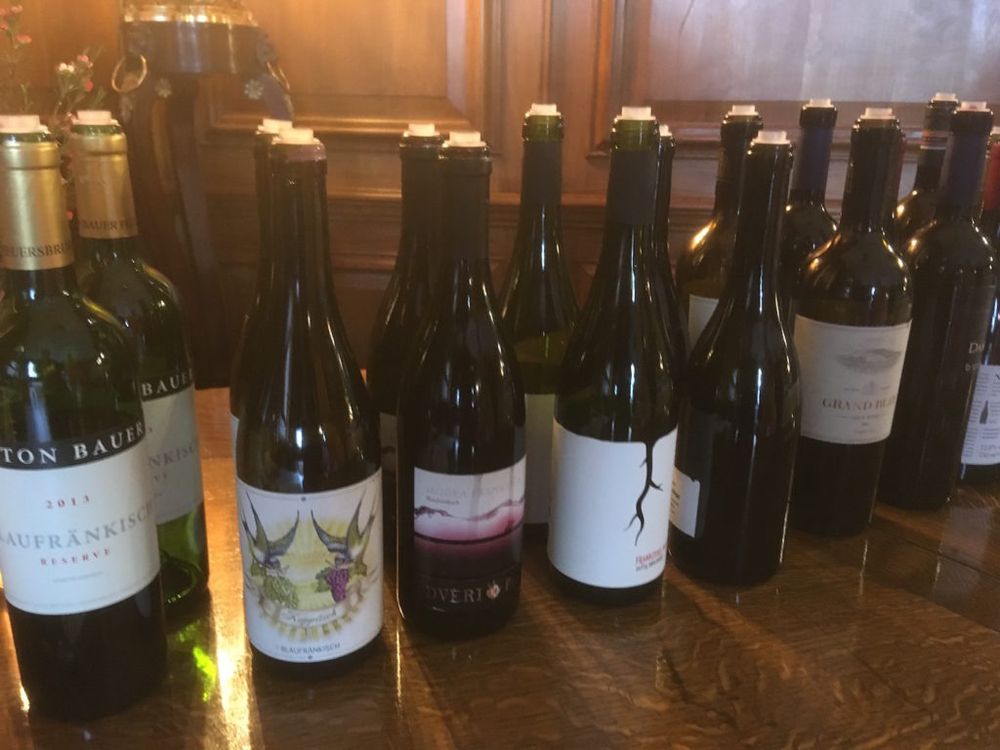
Though at first glance an international tasting, this was actually very Hungary-dominant (unsurprising, given that it was organised by WOH) with most of the producers from Slovakia and Romania located near the Hungarian border and generally also of Hungarian-origin (Bott Frigyes and Balla Geza being two of the most obvious examples). In essence, this was a Greater Hungary tasting – Viktor Orban would have been impressed – but all the more interesting for that.
And although it was interesting to try the single varietals, the high ratio of blends here with some famous producers like Eger’s St Andrea offering only blends, suggest many producers feel more confident offering the variety that way.
Orsi Szentkiralyi and Eva Barta, who held a masterclass on “Bulls Blood,” suggested that the usually more weighty Bikaver from Szekszard (legally allowed to make the blend since 1994) can often show better than the more famous Egri Bikaver. This last actually dates back not to 1552 – when legend suggests 2000 defenders of Eger drank it to hold off 200,000 Turks, prompting the latter to suggest the Hungarians must have been drinking “the blood of bulls” – but to 1917 when the blend was first established (Kekfrankos must form at least 45% of Szekszard Bikaver and between 30-65% of Egri Bikaver).
So which were the producers that impressed the most?
There are far too many to mention here, quite frankly, but a good word should go in for Vino Magula and Bott Frigyes, both from Slovakia, St Andrea from Hungary (how is it possible this great winery is still looking for an importer?) and Damjanić from Istria in Croatia, bought in by Croatian Fine Wines. But here are the ones that most stood out for me, and which are all available in the UK.
From Hungary, Kovács Nimród from Eger offered a range of both Kekfrankos and Bikaver of which just about everyone’s favourite – and it featured in Gabay’s masterclass – was the Grand Bleu 2012, an impressive single vineyard Kekfrankos with amazing depth and maturity, but checking in at a pricey £70 retail. Much better value, and very good, is the Blues 2016 at £17; available through Boutinot, this is classic Hungarian Kekfrakos, lots of dark fruit but great minerality, and very moreish.
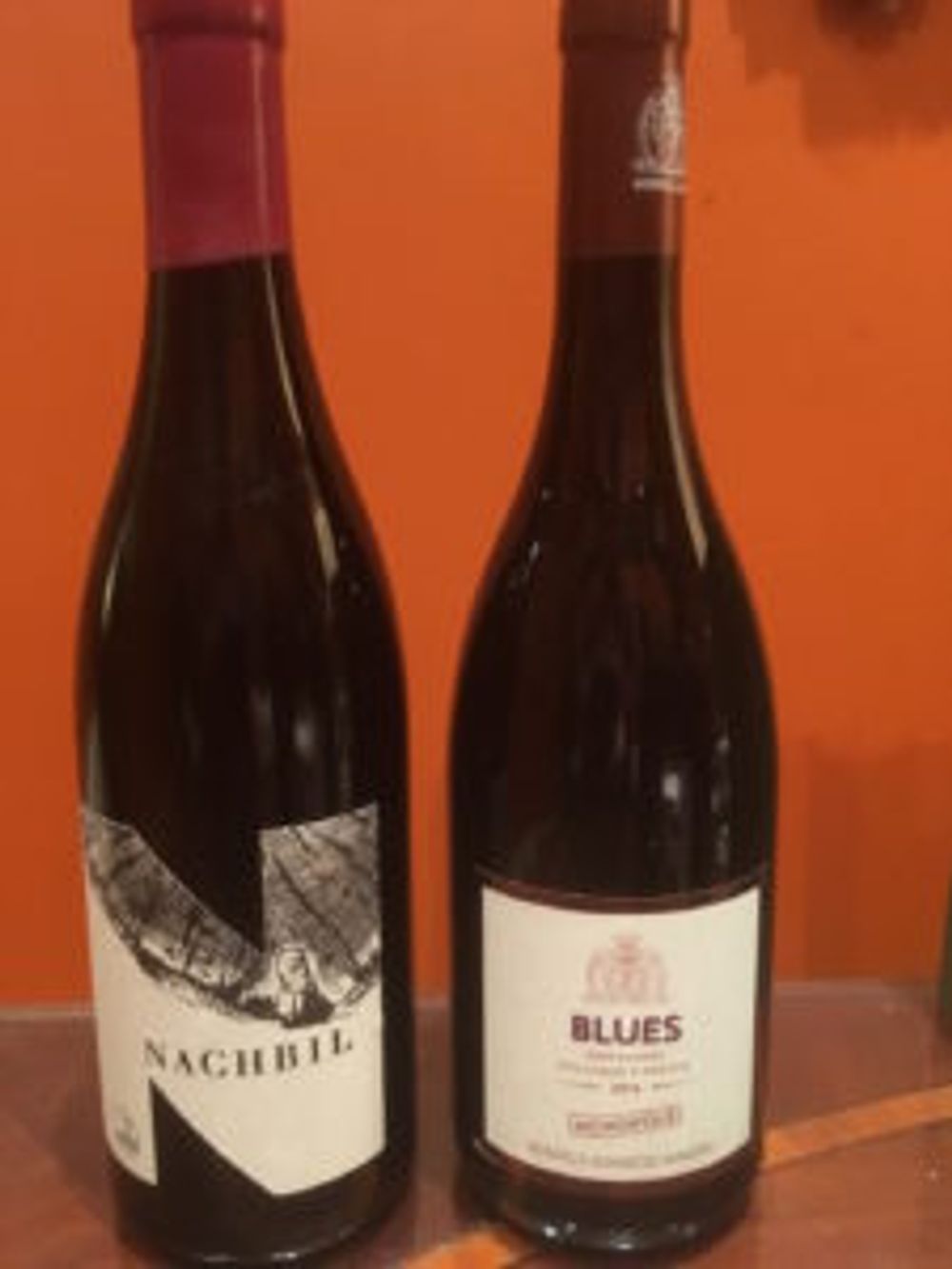
The Heimann Kekfrankos 2017 is a very different take on the grape; surprisingly light for a Szekszard wine this is bright and spicy, with pepper undertones and good balance. Good value too at around £16 from Top Selection, who also bring in the Bolyki Egri Bikaver 2016, a classic take on the blend, right down to the black bull on the label (although there is also a squirrel and a flying boat, suggesting this is not a wine to be taken too seriously). That said, there is a lot of character here, with tobacco and dark fruit and cherry flavours predominant. As well as Kekfrankos, this has Merlot, Cab Franc, Zweigelt and Blauburger vying for your attention. A modern classic in the making and enough to banish memories of all that second rate Bull’s Blood.

Romania, Slovenia and Austria
Romania’s prime minister is now, like Hungary’s, called Orban but the world is hoping thay Lodovic Orban is a smoother, more amenable character than Viktor. Romanian Blaufrankisch is likewise very different from the stuff over the border and the Nachbil Blaufrankisch 2017 is a real cracker; lots of character – it’s unfiltered – and just 12.6% alcohol, this is a fantastic, cherry-charged expression of the variety; organic, minimal intervention. (Boutinot, around £21 retail).
Also worth looking out for are Balla Geza’s wines, which rarely disappoint. The Blaufränkisch showed great length; imported by Novel Wines, they are great value at around £12 a bottle.
Slovenia isn’t a country you naturally associate with the Blue grape – but neither are Spain or Australia for that matter – but the Dveri Pax 2012 Modra Frankinja – is a surprise at a number of levels, not least because the winery is owned by the Benedictine Monastery of Admont. Available through the Wine Society for just £13.50, it showed very well at the tasting and also afterwards, wearing its 14% alcohol and dark but smooth tannins very well. Lots of spice and brambly dark fruit, this is one for a cold winter’s night.
And last but not least, Austria, seen by many as the original home of the Blue grape. There were, oddly, just four Austrian producers at the tasting but the most outstanding wine was the Anton Bauer Blaufrankisch Reserve 2013, from Wagram, close to Vienna and one of the country’s smallest wine regions. Made in limited quantities – just 3000 bottles – this is full-on, with lots of spice, but showing its age well and demonstrating clearly why the Blue grape should be taken seriously. At the other end of the scale – and at £19, half the price – the Kracher Reunion 2017 is also a single vineyard wine but less ambitious, with soft fruit supported by fine tannins. Tasted together, these wines are a great way to experience two very different faces of Austrian Blaufrankisch. (Both Top Selection).
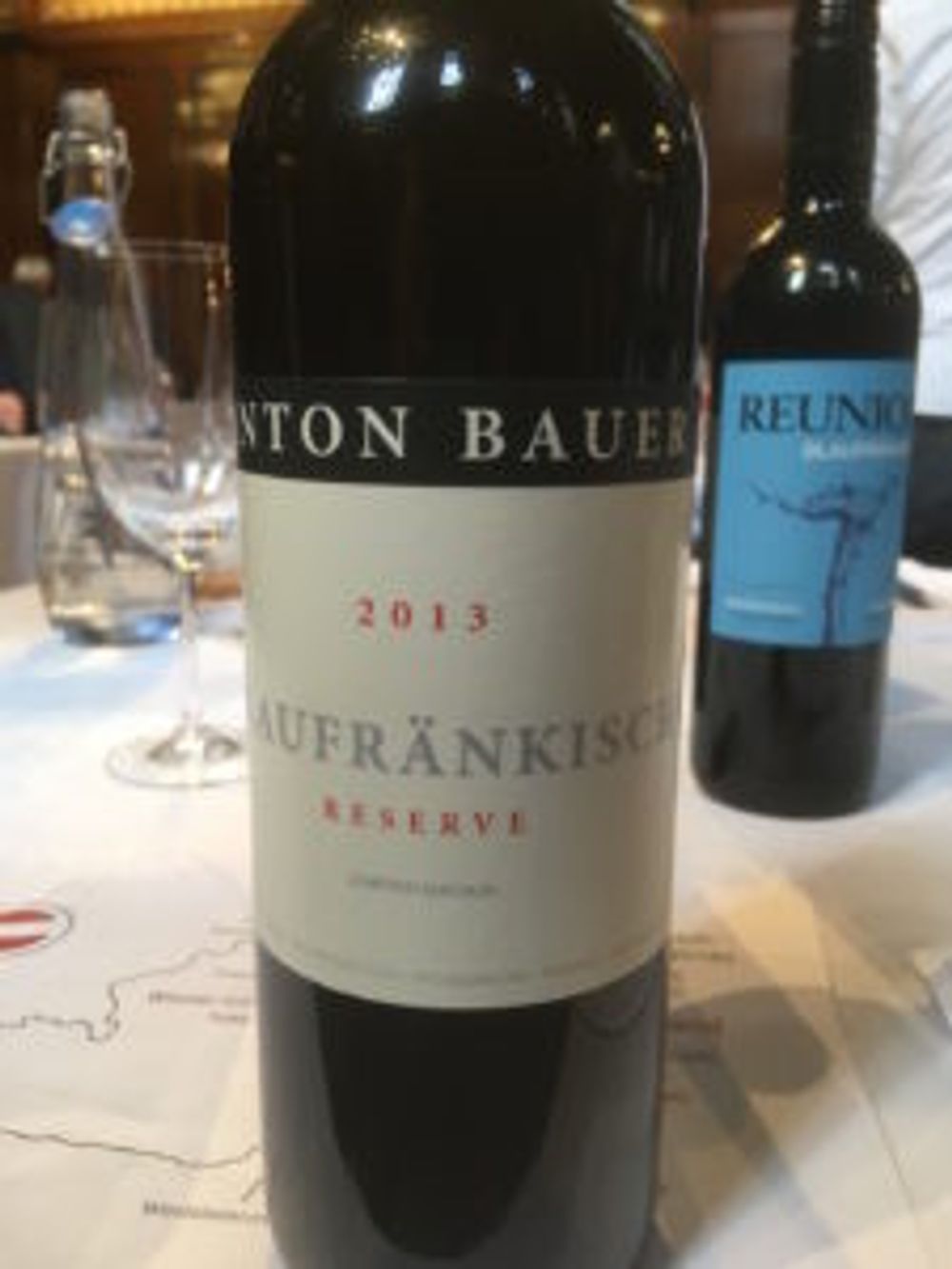
The Moric Haus Marke 2017 wasn’t actually at the tasting at all but I’m putting it in here because, frankly, it’s an old favourite and should have been. A blend of Blaufränkisch, Zweigelt and Pinot Noir this natural wine from Burgenland – in an area that was part of Hungary until after the Treaty of Trianon in 1920 (the Hungarian city of Sopron used to be the capital of Burgenland) – is rustic but in a good way, showing how renowned winemaker Roland Velich has earned his stripes as a master of the variety. This really is a steal at £14.95, again from the Wine Society. Very mineral, low intervention and with wonderful expression and zippy acidity, this is made from low yielding, old vines. The fact it is made by an Austrian whose winery sounds Hungarian, is located in Greater Hungary and tastes like a quality Burgundy, with echoes of a fine Nebbiolo, makes it all the more intriguing.

My LSE tutor would have been seriously impressed.
